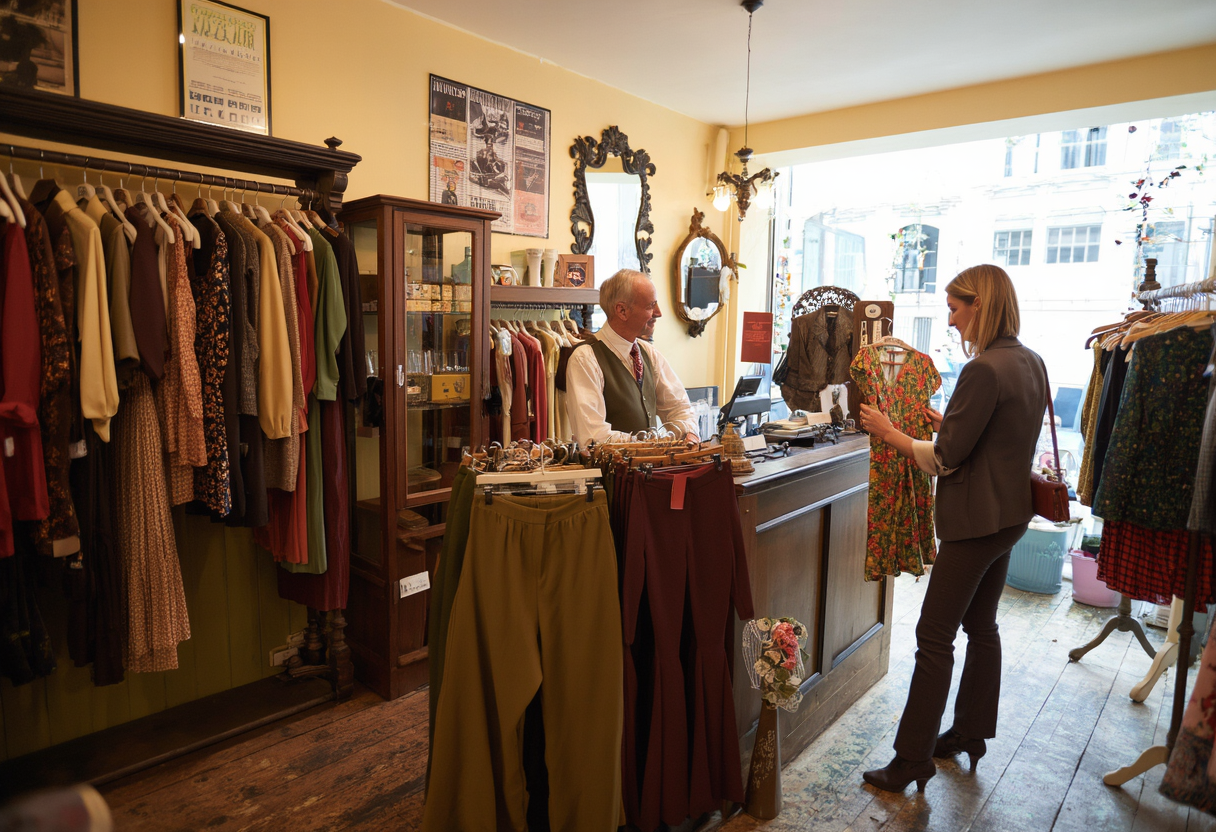Exploring the Timeless Allure of Vintage Clothing: A Fashion Statement for Every Era
Vintage clothing has transcended mere fashion trend; it embodies a cultural phenomenon that resonates with diverse generations. This exploration reveals how vintage styles evoke nostalgia, celebrate fashion history, and contribute significantly to sustainability in today’s clothing industry. By understanding its allure, shoppers can find unique pieces that reflect their individuality while making responsible choices. Let's dive into vintage clothing's journey through the decades.
Understanding Vintage Clothing: More Than Just Fashion
Vintage clothing refers to garments that embody notable styles from previous eras, typically ranging from the 1920s to the 1990s. This term encompasses a variety of designs, fabrics, and cultural influences, giving it a rich history. The true appeal of vintage clothing lies in its uniqueness; each piece tells a story and carries a charm that mass-produced clothing simply cannot match. Whether it's a 1950s dress or 1980s denim jacket, vintage clothing offers one-of-a-kind options for fashion lovers. Additionally, the sustainability aspect is a major draw; as consumers become more aware of fast fashion's environmental impact, vintage clothing presents an eco-friendly alternative. Thus, the vintage clothing market is thriving, showcasing its relevance both in style and ethical shopping. It's indeed fascinating how these items endure the test of time, remaining relevant across generations.
Nostalgia and the Vintage Clothing Phenomenon
Nostalgia plays a crucial role in the resurgence of vintage clothing within contemporary fashion. As individuals reminisce about past decades, they are drawn to styles that evoke pleasant memories or align with their personal identities. This nostalgic yearning is particularly evident among millennials and Gen Z, who seek to establish their personalities against the backdrop of previous eras. Vintage clothing resonates not only as a fashion choice but as a form of cultural expression, allowing wearers to connect with history. Moreover, vintage clothing often serves as conversation starters; discussing a particular piece can ignite stories about the era it represents, fostering connections among enthusiasts. Such interactive engagement elevates vintage clothing beyond mere aesthetics, intertwining it with a deeper narrative that celebrates style progressions through history.
The Sustainability Factor: Vintage Clothing's Role in Ethical Fashion
In our current fast-fashion landscape, vintage clothing emerges as a sustainable alternative. With increasing awareness regarding the fashion industry's environmental ramifications, shoppers are gravitating towards vintage shops and thrift stores, seeking ways to lessen their ecological footprints. Purchasing vintage clothing not only contributes to reduced textile waste but also minimizes the carbon footprint associated with new garment production. The durable quality often found in vintage items further affirms their sustainability; many pieces are made from robust materials that outlast modern fabrics. Consumers are thus empowered by their choices, knowing that each vintage clothing purchase supports eco-consciousness. This shift towards vintage reflects a broader cultural movement prioritizing sustainability, connecting fashion choices with meaningful impacts.
Shopping for Vintage Clothing: Tips and Tricks
Shopping for vintage clothing can be an exhilarating yet daunting experience for many. To navigate this unique landscape effectively, consider a few essential tips. Firstly, familiarize yourself with the different types of vintage categories, including antique (over 100 years old), vintage (20 to 100 years old), and retro (recently made but designed to resemble older styles). Secondly, inspect the quality of potential purchases: check for signs of wear, necessary repairs, or missing elements that may influence the garment’s longevity. Moreover, embracing a keen eye for style allows shoppers to discover amazing pieces that stand out. Whether online or in physical stores, vintage clothing shopping is about creativity and exploration, offering a treasure hunt-like adventure for distinctive styles. Armed with patience and the right knowledge, anyone can uncover stunning wardrobe additions that reflect their tastes.
The Cultural Impact of Vintage Clothing
The resurgence of vintage clothing in modern fashion significantly influences cultural identity and self-expression. It provides a platform for individuals to creatively engage with their heritage while embracing an eclectic mix of styles. Vintage clothing fairs and pop-up shops have proliferated, serving as cultural hubs where people gather to celebrate fashion history and share their passions. When individuals wear unique vintage outfits, they express their individuality while contributing to a broader cultural dialogue surrounding fashion trends. This phenomenon extends to various communities, as vintage clothing fosters inclusivity and diversity in style. Each vintage piece holds the potential to revolutionize an outfit, making it an emblem of personal storytelling where wearers redefine fashion norms. Such cultural impact intertwines history with contemporary innovation, ultimately enriching collective fashion narratives.
Conclusion: Embracing Vintage Clothing as a Personal and Cultural Statement
In conclusion, vintage clothing transcends being just a fashion choice; it's a powerful reflection of personal expression and historical narrative. As we continue to witness its impact on sustainable fashion, consumer engagement, and cultural identity, it becomes clear that the allure of vintage clothing is unwavering. By embracing these timeless pieces, individuals not only enjoy style variety but also participate in a larger movement toward responsible consumerism. Thus, the journey into the world of vintage clothing is an invitation to discover the beauty of the past while shaping a more innovative and thoughtful fashion future.
